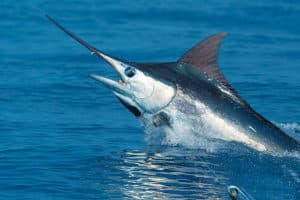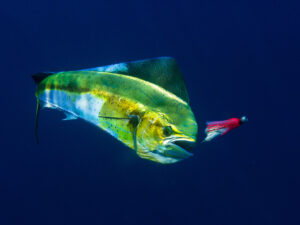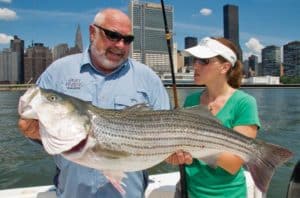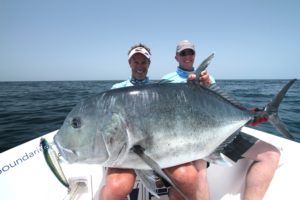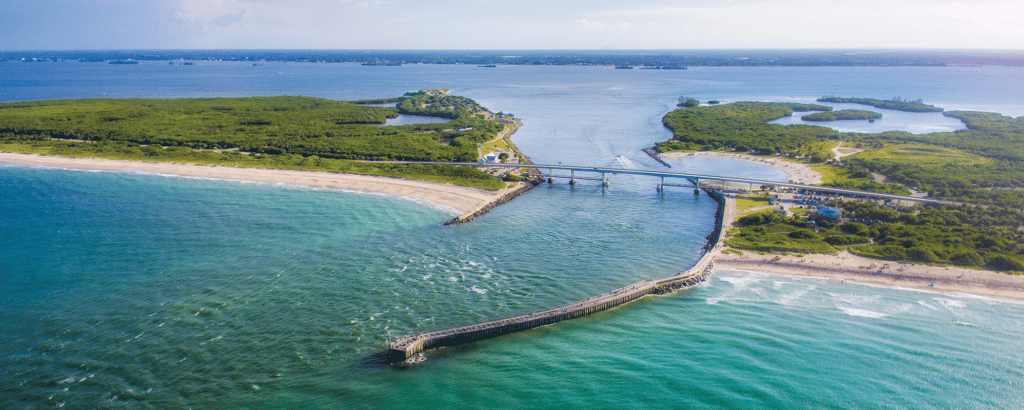
Capt. Glyn Austin wanted me to toss my topwater plug like I was halfway through a game of cornhole. Before casting, Austin’s son Jesse, also a local captain, smeared Pro-Cure blue crab scent onto the lure to sweeten the offering. I plopped the plug a boat length away from Austin’s 23-foot Shoalwater.
“Leave your bail open; just let it drift freely,” said Austin. “If the reds are around and hungry, they’ll hit that lifeless plug.”
I planned on trying out new topwater plugs such as the Rapala Skitter V and LiveTarget Mullet, ready to compare their actions, but instead should have brought a crab imitator. We were hunkered down in Sebastian Inlet, in about 15 feet of water, located along Florida’s central east coast.
Austin wanted my topwater to imitate a crab floating out to the ocean.
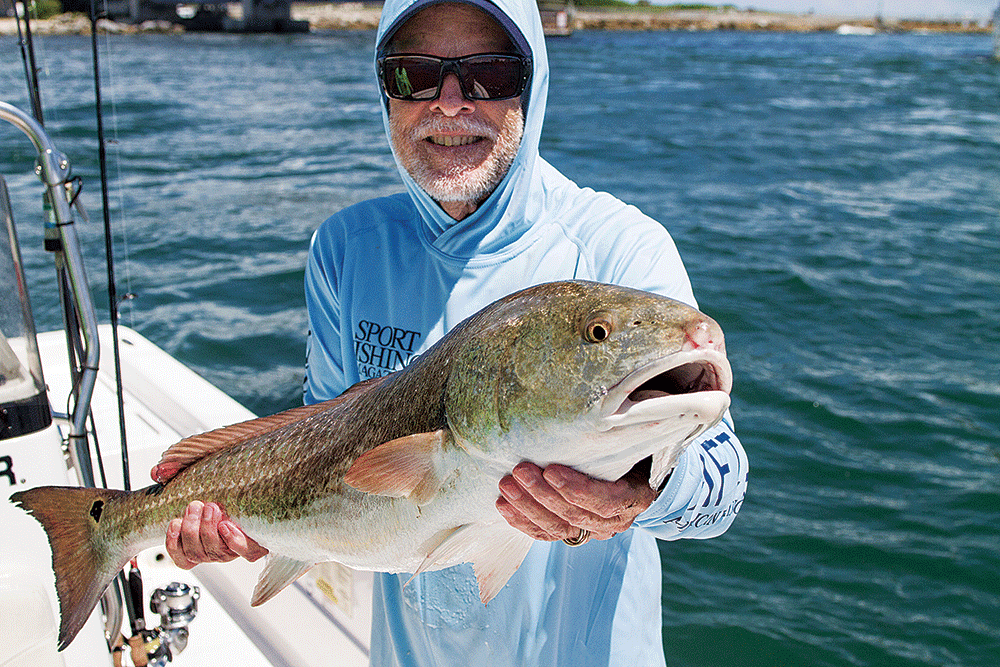
“Bull reds face into the current and look toward the surface for crabs,” says Austin. “I don’t know of many other places where reds regularly come to the surface to feed in water this deep. They’ll even cruise at the surface, and sometimes you can sight-fish them.”
Just then, Austin pointed from his tower to a giant red sphere swimming against the current near Austin’s Shoalwater 23 Cat Tunnel boat. It was gone before I got a chance to cast, but I knew exactly what it was.
Topwater Tactics for Deepwater Redfish
We centered our casts along a specific lane off the main channel where drum occasionally blasted crabs at the surface. Austin says reds feed in different sections of the inlet, so he moves around if no fish are showing initially.
“On select days, reds are aggressive and hookups are easy,” says Austin of the inlet. “On other days, you’ll get plenty of strikes but no connections. And on some days, the reds just aren’t around.”
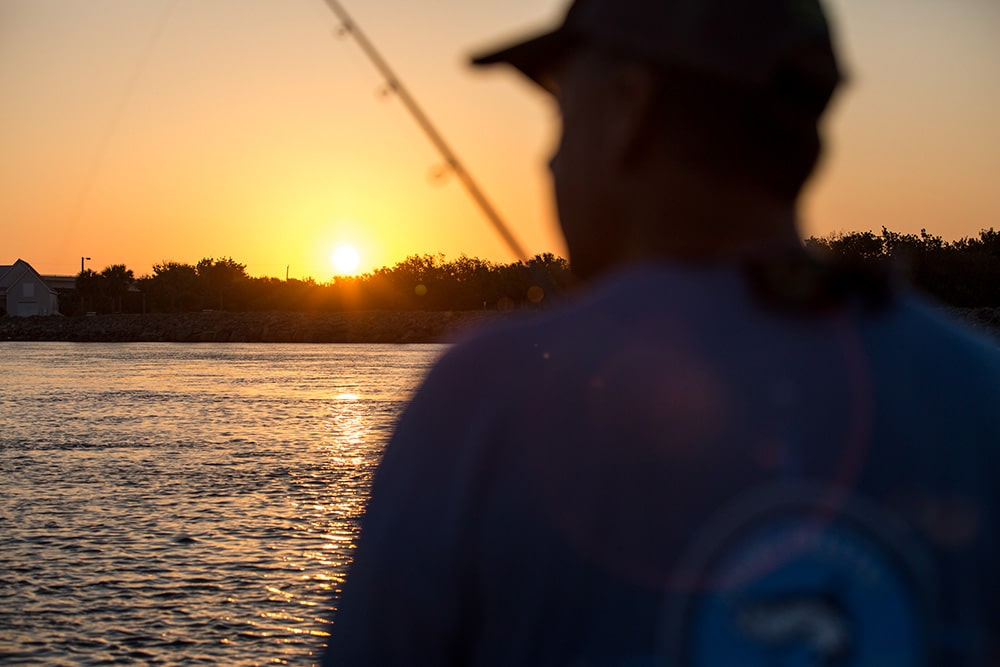
More than once, 30-plus-inch red drum attacked my lure without staying attached to the pair of trebles, seemingly the only downside to surface fishing. One fish in particular hit twice in quick succession, and somehow I still couldn’t pull tight. Before long, the tide slowed and the bite stopped, signaling the end to our unique deepwater topwater bite.
I joined both Glyn and Jesse Austin for a day of fishing in early June. The trip was part of a larger group of Sport Fishing editors and staff members fishing together, with home base nearby at Captain Hiram’s Resort. A slew of co-workers of different fishing levels and abilities experienced what Sebastian, Florida, had to offer over a couple of days of fishing. Together, we hoped to accomplish the unofficial Sebastian slam, consisting of snook, redfish, seatrout, tarpon and false albacore catches.
Bait for Redfish and Snook
On another day, Sport Fishing‘s Mark MacKenzie and Drew Townes joined Austin to target Sebastian Inlet’s bull reds, but they utilized completely different tactics to score on their trip. Instead of casting lures on top, the trio spent time catching baitfish before heading out to the end of the north jetty.
“Croakers are like candy for big redfish and snook,” says MacKenzie. “If they’re around, it pays to spend time catching a bunch of them. We used two-hook rigs baited with chunks of Fishbites to catch as many as we could.”
With a livewell full of fragile croakers, Austin, MacKenzie and Townes headed to the ocean side of the jetty rocks. Targeting an outgoing-tide rip, the anglers used a simple bottom rig with an egg sinker and a couple feet of leader to present the live croaker on a 5/0 circle hook. Rods measured 7 to 8 feet in length, paired with 3,000- to 4,000-size Shimano spinners.
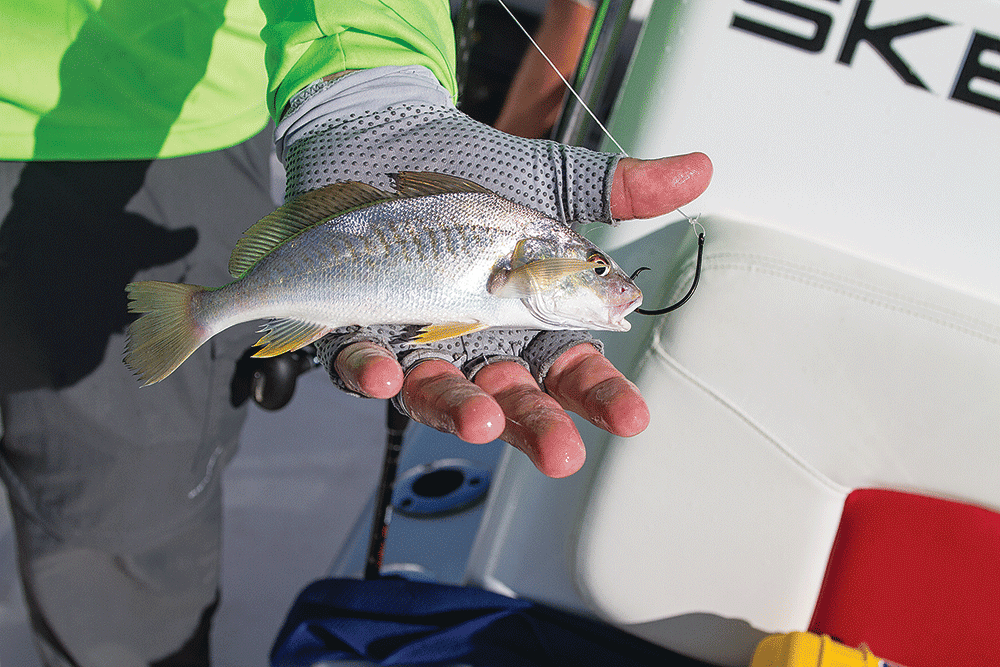
“Croakers are incredibly lively and loud, attracting snook and redfish better than baitfish like mullet,” says MacKenzie.
Austin utilized two other techniques when the tide turned.
On the incoming tide, MacKenzie and Townes cast croakers toward the inlet side of the jetty. Austin’s boat drifted with the current inside the inlet, allowing both anglers to spot-cast in and around the boulders. Austin had to make sure his catamaran didn’t drift over lines coming from anglers fishing from the jetty.
Sebastian Inlet’s north jetty is notorious as a fish attractor and producer; most seasons, boat and jetty anglers have the opportunity to catch slot-size and over-slot snook and redfish, along with species such as Spanish mackerel, flounder, bluefish and others.
MacKenzie’s biggest snook of the morning was a bruiser, measuring 37 inches. In total, the trio caught a half dozen 20-plus-pound redfish, with the largest drum close to 40 inches. Many of those reds bit using a third technique that only boat anglers can exploit.
Away from the jetty, ledges in the channel stack fish up on the deeper down-current sides.
“We got rid of the weights and free-lined our tail-hooked baits down to the ledges,” said MacKenzie. “The croakers naturally swim toward the bottom for safety, and we’d let our baits plunge just deep enough for reds to find them.”
Most of the reds were landed and released, but a couple of drum had their own intentions. Austin allowed the boat to drift underneath the Highway A1A bridge during the fish fight.
“One fish that Glyn hooked had to be over 40 inches,” said MacKenzie. “He fought it off the bottom, but suddenly the main line snapped and the braid slithered down into the depths.”
Nearshore Fishing in the Atlantic Ocean
Heading out of the inlet to nearshore waters offers anglers opportunities at mackerel, cobia and bottomfish such as snapper and grouper. But much closer to shore, silver giants hang around in spring and summer.
In the morning calm, Austin found a piece of reef in 20-foot depths that served as our starting point. He pulled out a couple of heavy spinner setups, bolstered with Shimano Saragosas.
Austin pitched lip-hooked mullet behind the boat, staggering their distances from the stern. Angler Shawn Bean, Sport Fishing‘s editorial director, grabbed one of the rods as Austin put the boat into gear to slow-troll. I added a bait into the mix as we passed a couple of schools of obnoxious Atlantic bumper.
Tarpon don’t always play nice at the surface, but eventually, at least one fish from the school will gulp air. We spotted a school of tarpon farther north along the beach and quickly picked up lines to get there.
My first hookup was prototypical. The mullet started freaking out as my braid danced in front of me. Then, a sharp pull brought my rod tip down. I reeled hard to let the circle hook set. My first fish jumped twice before spitting the hook like an old piece of gum.
My second bite of the morning was subtler. When slow-trolling, it’s vital to keep the line tight so you can feel what’s happening with your bait. I let line out periodically in hopes my bait would move farther away from the boat, but the strongest mullet can swim faster than your trolling speed. In short, I lost touch with my bait.
When I checked it, I realized my line was out in front of the boat. Immediately, I reeled tight and gathered that a tarpon had slurped my bait and was content swimming ahead of us.
Once the hook struck, the tarpon thrashed hard and jumped toward the heavens. Since the hook was set deep inside the tarpon’s mouth, my fish lasted just one jump before breaking off. Don’t make the same mistake I did. When slow-trolling, always keep your line tight and know exactly where your bait’s swimming.
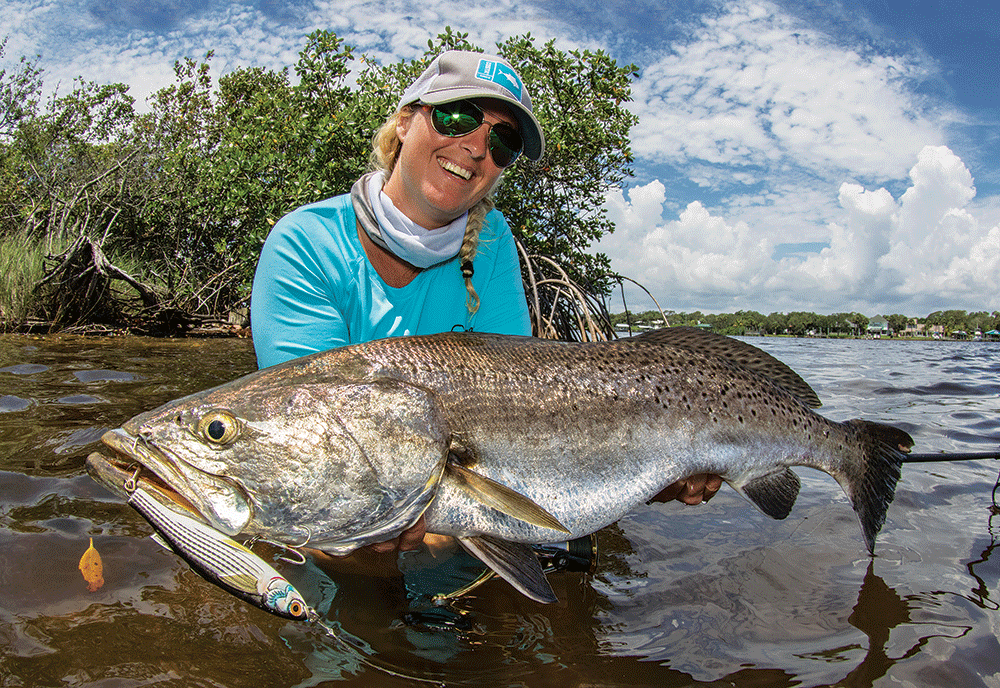
A dwindling tarpon bite turned into a crank fest for the most under-appreciated game fish off the Florida coast. Little tunny, often referred to as false albacore, sprayed miniature baitfish like sprinkler heads 100 yards outside the inlet.
We had luck with MirrOlure Lil Johns and Rapala Slab Raps that resembled the size of the baitfish. Catching the poor man’s tuna was an absolute blast on seatrout tackle; the blistering runs of the saltwater footballs made everyone on the boat smile.
Fishing the Flats, Bridges and the River
For shallow-water stalkers, Sebastian offers scattered Indian River Lagoon flats and the St. Sebastian River system to explore. Sea-grass beds here aren’t nearly as prevalent as years ago, so Austin relies on structure such as docks, spoil islands and clam leases.
Large seatrout and black drum congregate at the mouth of the Sebastian River during summer months, chomping baits such as Berkley Gulp!s and Z-Mans. We landed a couple of smaller speckled trout the day we fished the flats, catching them on soft plastics with jig heads.
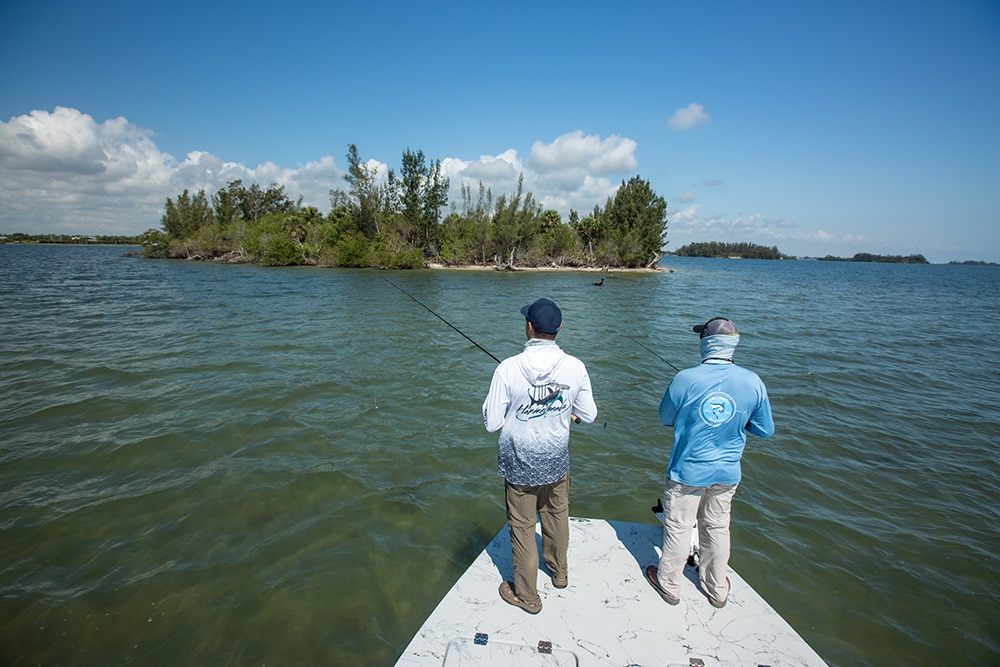
“When fishing around the spoil islands, look for the deeper water,” says Austin. “Big snook sit in those sandy holes, motionless, during the day. If you can cast to them before the boat spooks them, you have a chance to hook one.”
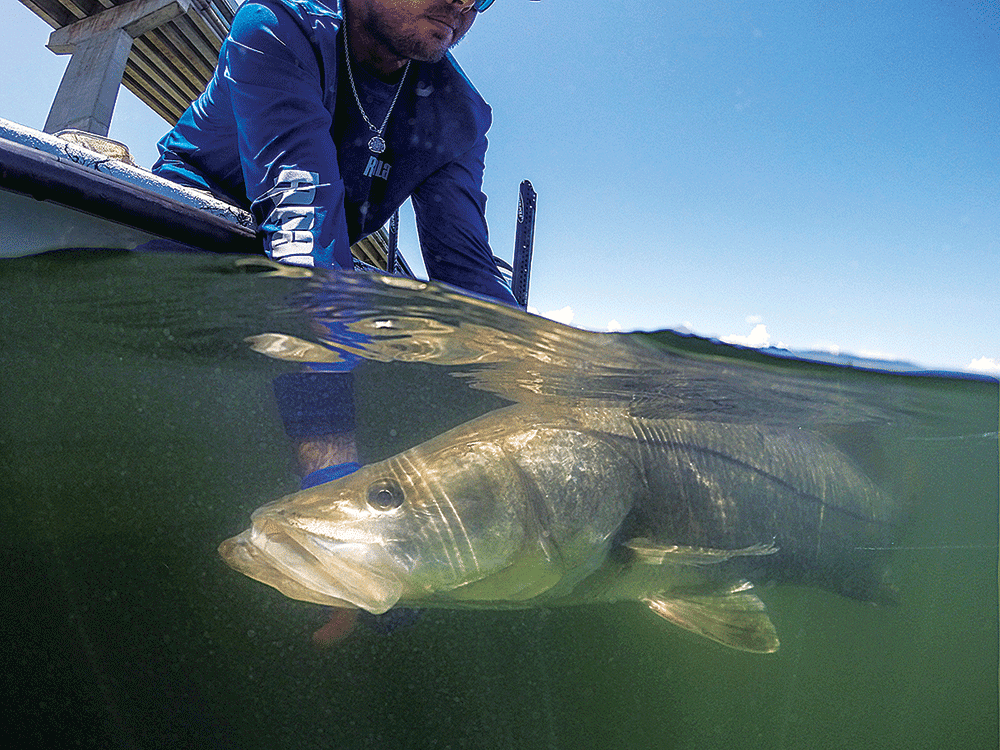
We spotted several massive linesiders that looked like black logs in the water, only to have them swim away slowly as the boat neared. Determined to catch a hefty snook, Austin took us to a secret bridge that was surrounded by murky brackish water.
At the bridge, Jesse baited a weightless circle hook with a live mojarra and cast between three pyramid-shaped pylons. Depths were at least 12 to 15 feet, but Jesse mentioned it was more important to keep the bait near the structure rather than get the bait to the bottom.
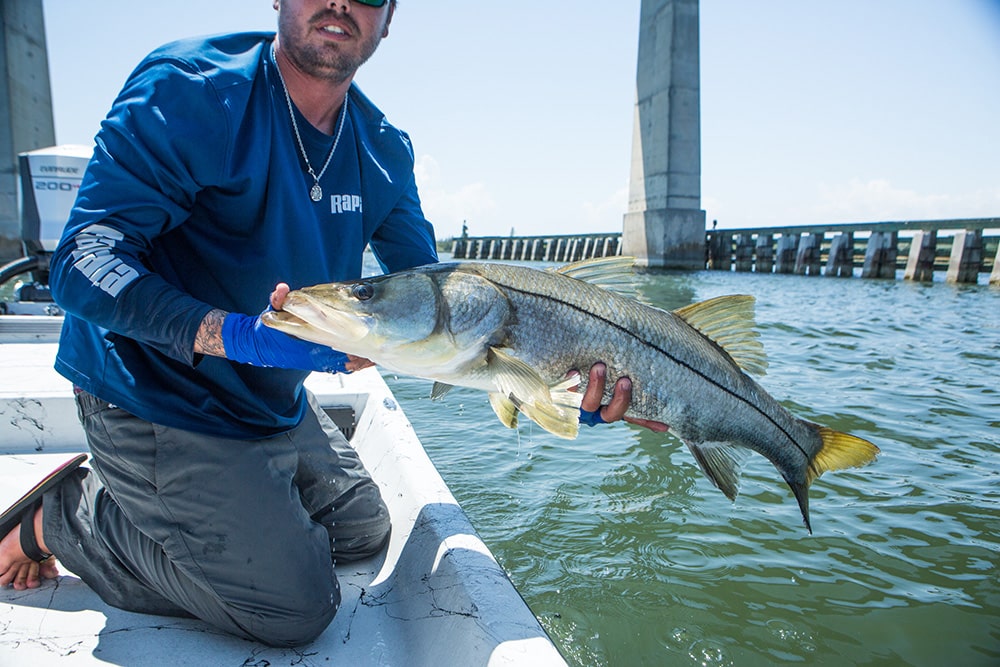
As he reeled his bait back to the boat after his first cast, a giant snook pulled away from the structure and attacked his offering. Each one of us was shocked, watching the entire thing happen live. Then it was a scramble. A mix of nifty moves and luck allowed Jesse to pull the snook from the structure.
Bridge fishing is similar to jetty fishing for two reasons: One, redfish, snook and grouper hang in the deep water near structure. Two, the bite only happens during moving water.
“Yesterday, we caught a bunch of goliath grouper up to 30 pounds,” said Austin. “Sometimes it might be black grouper, snook or redfish — you’re never quite sure what you’ll catch at the bridges.”
Austin uses his trolling motor to circle around different pylons and bridge feet to cast to his favorite spots. Anglers flip baits such as pinfish or mojarra toward the different structures similar to pitching for largemouth bass. But instead of baitcasters, Austin uses his tarpon spinning gear with 40- to 80-pound leader.
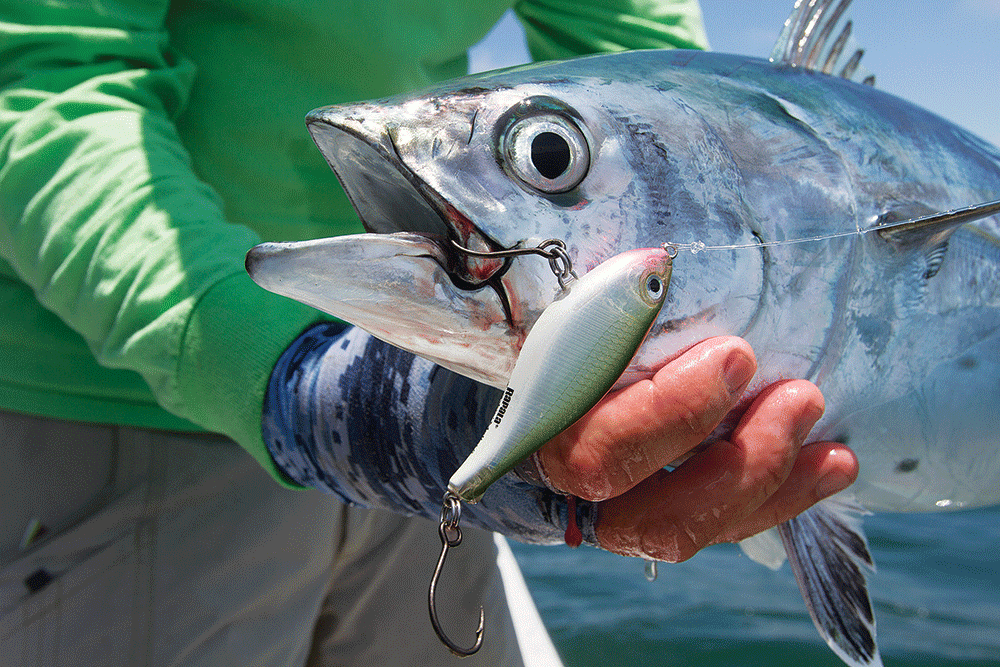
After the tide slowed, so did the bite. Austin is masterful at hitting different parts of the inlet, river and lagoon to coincide with moving tides.
There are other species available in the Sebastian area, such as flounder, black drum and pompano, that we missed, but our days were already packed with action. Although we didn’t complete the Sebastian slam, we certainly had the chance. If you’re considering a fishing trip to Florida, think about heading over to the Sebastian Inlet area in Indian River County. The fishing action can be fast and furious all day long, and you might be able to pull off a slam of your own.
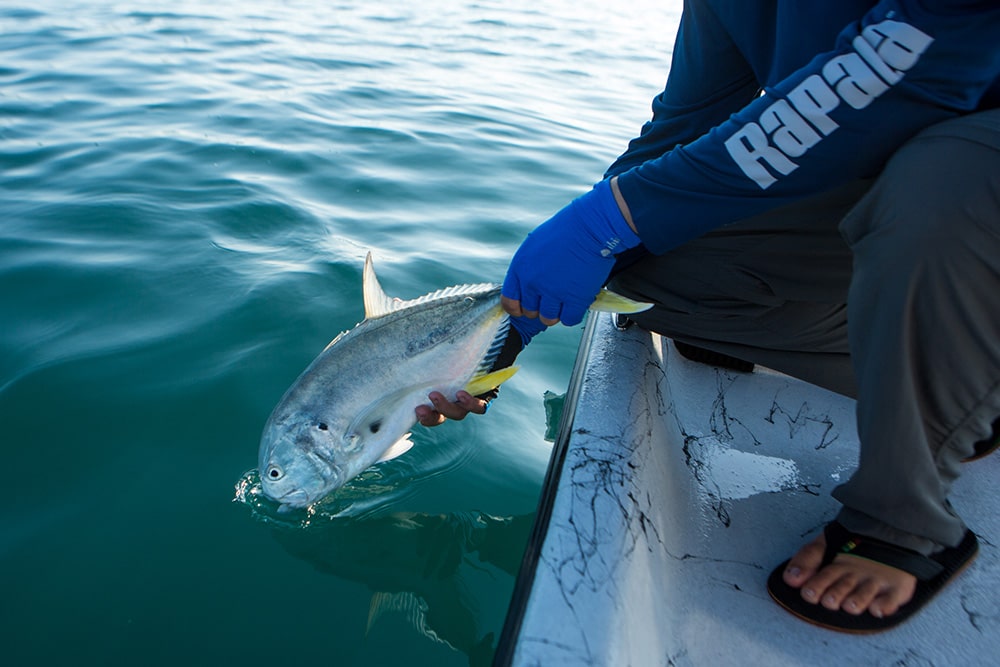
What You Can Catch
Here are eight saltwater species commonly found in the Inlet at various times during the year.
| Species | January | February | March | April | May | June |
|---|---|---|---|---|---|---|
| Cobia | N/A | Fair | Excellent | Excellent | Good | Good |
| Redfish | Fair | Fair | Fair | Good | Good | Good |
| Snook | Good | Good | Good | Fair | Fair | Good |
| Speckled Trout | Fair | Fair | Good | Good | Good | Good |
| Pompano | Good | Excellent | Excellent | Excellent | Fair | N/A |
| Kingfish | Excellent | Excellent | Excellent | Excellent | Fair | Fair |
| Grouper | Excellent | Excellent | Excellent | Excellent | Good | Good |
| Snapper | Good | Good | Good | Good | Good | Excellent |
| Species | July | August | September | October | November | December |
|---|---|---|---|---|---|---|
| Cobia | Excellent | Excellent | Good | Fair | Fair | N/A |
| Redfish | Excellent | Excellent | Excelleny | Excellent | Good | Good |
| Snook | Excellent | Excellent | Excellent | Excellent | Good | Good |
| Speckled Trout | Excellent | Excellent | Excellent | Excellent | Good | Good |
| Pompano | N/A | N/A | N/A | Fair | Good | Good |
| Kingfish | Excellent | Excellent | Excellent | Excellent | Excellent | Excellent |
| Grouper | Fair | Fair | Fair | Fair | Good | Excellent |
| Snapper | Excellent | Excellent | Excellent | Excellent | Good | Good |
Planning a Trip to Sebastian Inlet
Sebastian’s a quaint seaside town of about 24,000 people, with plenty of public access to the Indian River Lagoon, Sebastian River and open Atlantic Ocean via Sebastian Inlet. Situated between Cocoa Beach and Palm Beach, this unique spot is easily overlooked.
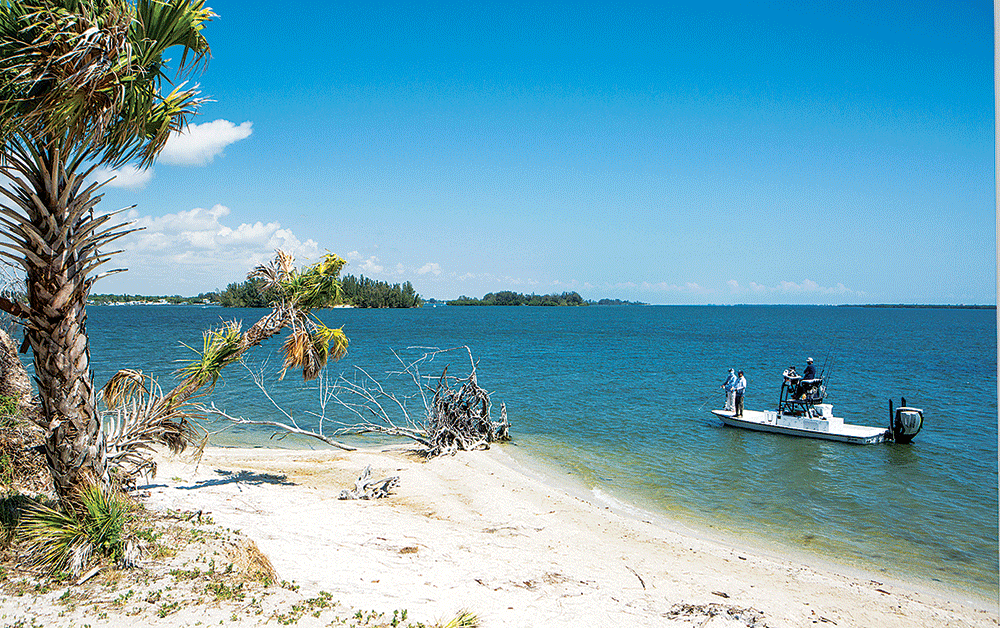
• Whom to Call: A number of different captains fish the area. From personal experience, I emphatically recommend Capt. Glyn Austin, of Going Coastal Fishing Charters.
• Where to Stay: Rugged outdoorsmen can camp at beachside Sebastian Inlet State Park. For the rest of us, Captain Hiram’s Resort offers Bahamian-style riverfront accommodations directly on the Indian River Lagoon. We stayed at Captain Hiram’s the night before fishing and found the accommodations inviting and ideally located. The vacation spot offers 86 guest rooms in four different accommodation styles, the Sandbar Beach Club for live music and the Blackfins Grill for waterfront dining, plus a full-service marina.
• A Break From Fishing: Besides fishing, Sebastian offers nearby beaches for surfing, diving and swimming. Golfers can set a tee time at Sebastian Municipal Golf Course, Sandridge Golf Course or Habitat Golf Course. Orlando and the Disney attractions are just a two-hour drive away.

